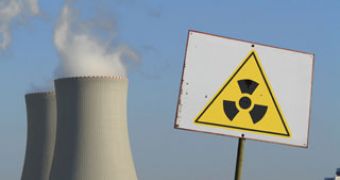There is a general misconception that nuclear power plants produce dangerous levels of radiation during their electric energy production activity, or that they are just another disaster waiting to happen. The truth is that aside the fact that they produce energy in an extremely efficient manner, without emitting any kind of greenhouse gases or any other pollutants, the amount of radiation created during the nuclear fission reaction is mostly contained inside the nuclear reactor. Catastrophic accidents like the one that took place at Chernobyl in 1986, are extremely unlikely to take place in our days as nuclear reactors operating today benefit from multiple protection systems that prevent a scenario in which the nuclear reaction gets out of control.
Furthermore, studies taking place in the last three decades seem to suggest that not only that traditional power plants burning fossil fuel dump high amounts of carbon dioxide gas and secondary byproducts in the atmosphere, they also emit more radiation than most of the nuclear power plants in use around the globe. According to scientists the fly ash resulted from the burning of coal emits about 100 times more radiation than nuclear waste.
Why this is happening is pretty straightforward and well understood, as coal extracted from Earth's crust often contains high amounts of impurities like heavy radioactive elements such as uranium or thorium. Usually coal deposits do not pose any danger of radiation poisoning; however, when the coal is processed most of the impurities are not burned and can result in fly ash that has about ten times the radioactive emissions of the original fuel.
Such fly ash containing radioactive elements can usually travel up to 1.6 kilometers from the power plant, which may cause radiation poisoning if ingested. In 1978, J.P. McBride made a study in which he compared the radiation exposure near coal burning plants and around nuclear power plants. What he found is shocking even today. The amount of radiation to which people living around traditional power plants are subjected is often equal or greater than the levels measured near nuclear power plants.
However, scientists evaluate that the risk posed by radiation poisoning is relatively low, as it only accounts for 0.1 percent of the radiation levels we are subjected to every year. We should be concerned about more worrying consequences of the coal burning process, such as the emission of multiple oxides that are held responsible for the formation of the acid rain phenomena and global warming.
Though it seems that the radioactivity of fly ash presents immediate danger, both the coal and nuclear radio emission present little health hazard. Nevertheless, the world is now turning more and more towards nuclear power, which by 2020 should provide about 20 percent of the electric energy produced worldwide.

 14 DAY TRIAL //
14 DAY TRIAL //